Sweetheart cherries are one of the most popular sweet cherry varieties for backyard gardeners and small orchard growers alike. Known for their bright red skin, juicy flesh, and exceptional sweetness, Sweetheart cherries have gained a reputation as a premium table fruit that’s also excellent for preserves, baking, and snacking straight from the tree.
The first harvest is a particularly exciting milestone for any cherry grower. It signifies not only patience and care paying off but also the beginning of a new tradition of homegrown fruit enjoyment. Inspired by the video “First Harvest Sweetheart Cherries,” this guide provides a detailed roadmap to successfully grow, care for, and harvest Sweetheart cherries, ensuring the tree’s long-term health and abundant fruit production.
Introduction to Sweetheart Cherries
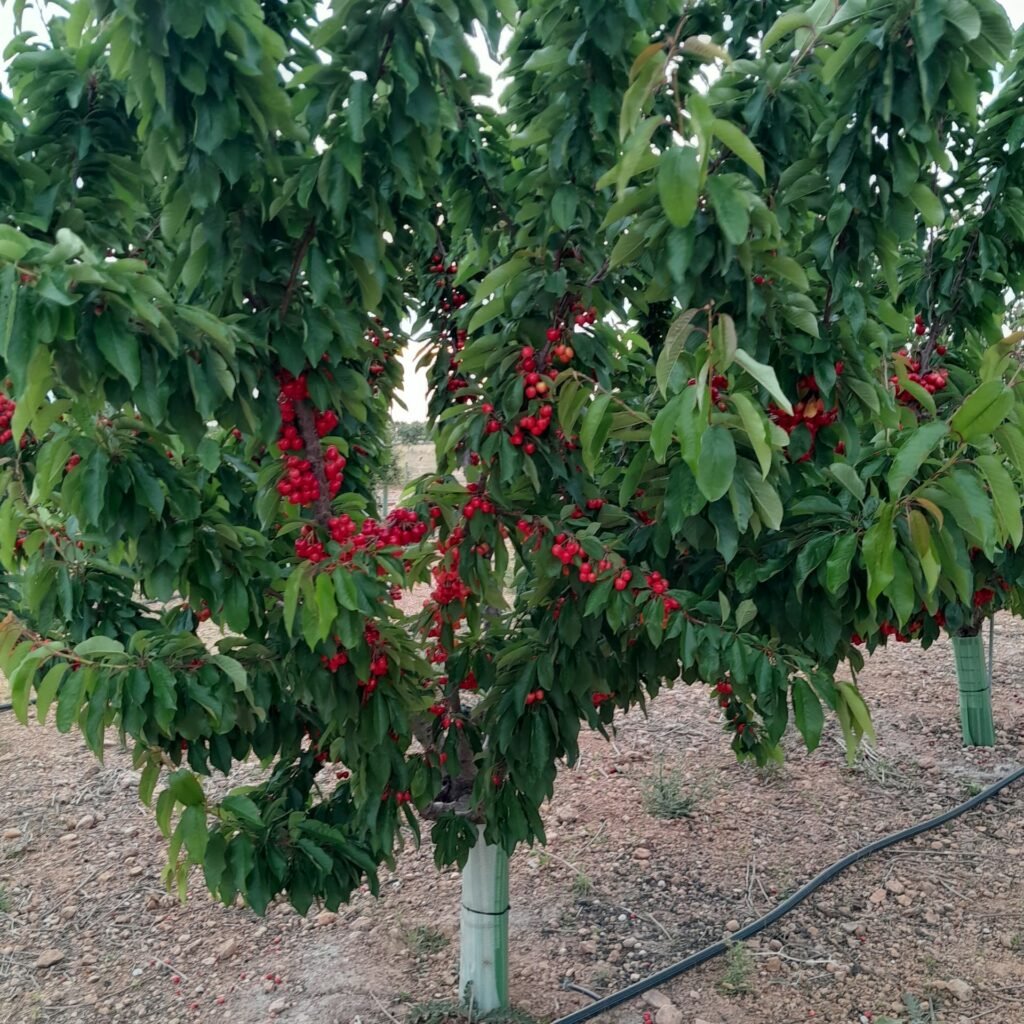
Sweetheart cherries are a late-season sweet cherry variety developed in British Columbia, Canada. They are particularly known for their firm texture, excellent shelf life, and rich flavor, making them a favorite among commercial growers and home gardeners.
Key Features:
- Fruit Appearance: Bright, glossy red with a round to slightly heart-shaped form.
- Flavor Profile: Sweet, crisp, and juicy; ideal for eating fresh or cooking.
- Tree Growth: Upright and vigorous, reaching medium to large size at maturity.
- Flowering Type: Self-fertile, but cross-pollination with another compatible cherry variety can enhance yield.
- Climate Preference: Prefers temperate climates with cold winters to promote flowering and fruit set.
Understanding these characteristics helps gardeners provide the optimal environment for their first harvest and future crops.
Step 1: Selecting the Ideal Site for Planting
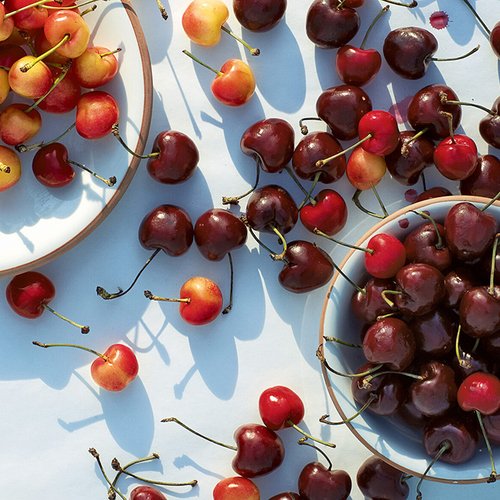
Site selection is crucial for the success of Sweetheart cherries:
Sunlight Requirements
- Sweetheart cherries thrive in full sun, with at least 6–8 hours of direct sunlight daily.
- More sunlight ensures better fruit color, sugar content, and tree vigor.
Soil Requirements
- Well-draining soil is essential to prevent root rot, a common problem in cherry trees.
- Sandy loam or loamy soils enriched with organic matter are ideal.
- Soil pH should be slightly acidic to neutral, ranging from 6.0 to 7.0.
Spacing Considerations
- Full-sized Sweetheart cherry trees: 18–22 feet apart.
- Dwarf or semi-dwarf trees: 12–15 feet apart.
- Proper spacing ensures good air circulation, reduces disease risk, and allows sufficient sunlight to reach all parts of the canopy.
Step 2: Planting Sweetheart Cherry Trees
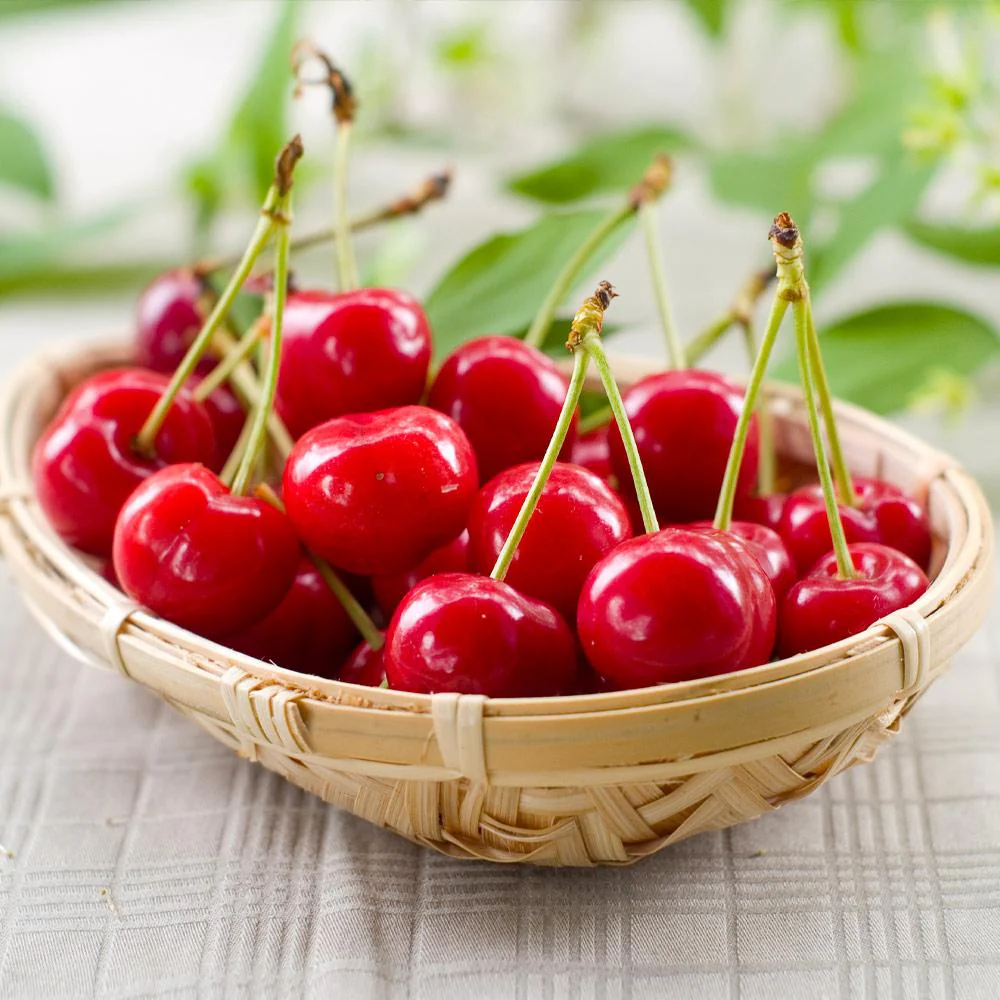
Preparing the Planting Hole
- Dig a Hole: Approximately twice as wide as the root ball and equal in depth.
- Loosen the Soil: Break up compacted soil to allow roots to spread easily.
- Amend the Soil: Mix in compost or aged manure to improve fertility and drainage. Avoid over-fertilization at planting.
Planting the Tree
- Position the tree in the center of the hole, spreading roots evenly.
- Ensure the root flare sits slightly above soil level to prevent rot.
- Backfill gently with amended soil, pressing lightly to remove air pockets.
- Water thoroughly after planting to settle the soil and hydrate the roots.
Step 3: Early Care and Watering
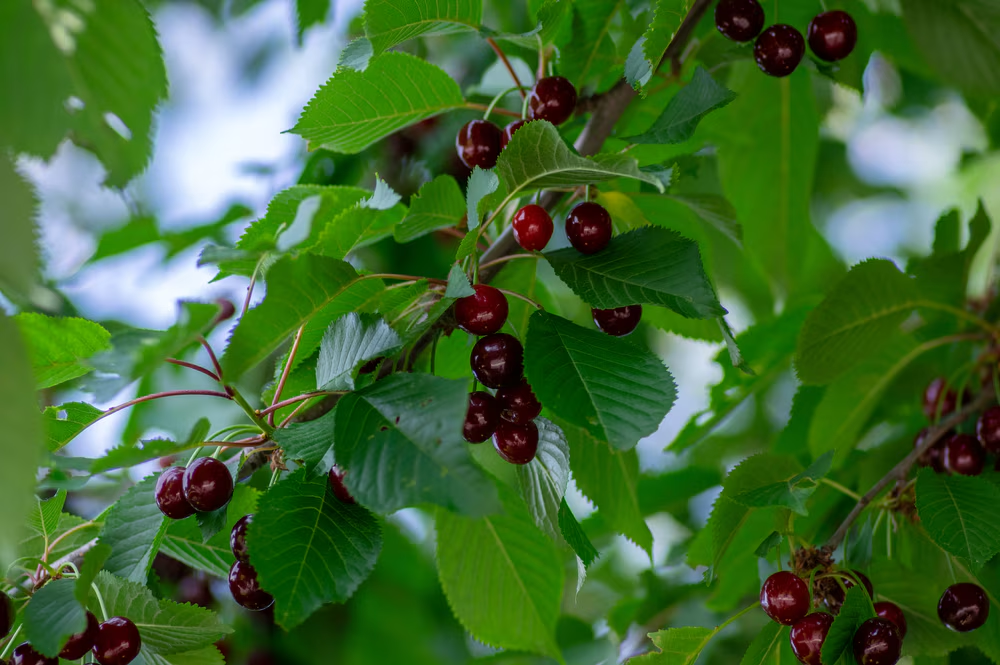
Young Sweetheart cherry trees require consistent care to establish strong roots and healthy growth:
Watering
- Water deeply 2–3 times per week during the first growing season.
- Focus on slow, deep watering to encourage roots to grow downward rather than staying near the surface.
- Mulch around the base to retain moisture, regulate soil temperature, and prevent weeds.
Fertilization
- Use a balanced fertilizer or organic alternatives like compost or seaweed extract to provide essential nutrients.
- Avoid excessive nitrogen, which can promote leafy growth at the expense of flowers and fruit.
Step 4: Pruning and Tree Training
Proper pruning helps your Sweetheart cherry tree develop a strong framework and improves fruit production:
Initial Pruning
- Remove broken, damaged, or crossing branches at planting.
- Prune the central leader slightly to encourage lateral branching.
Annual Pruning
- Conduct light pruning in winter while the tree is dormant.
- Remove dead, weak, or diseased branches.
- Maintain an open canopy to improve sunlight penetration and airflow, reducing disease risk.
Training Young Trees
- Stake young trees to prevent wind damage.
- Train branches at 45–60° angles from the central leader to support fruit loads and promote balanced growth.
Step 5: Pollination
Sweetheart cherries are self-fertile, meaning they can produce fruit on their own. However, planting a compatible cherry variety nearby can improve fruit set and overall yield:
- Compatible pollinators include Bing, Rainier, or Van cherries.
- Ensure pollinators are planted within 50 feet for optimal cross-pollination.
- Encourage bees by planting flowering companion plants or providing a pollinator-friendly garden.
Step 6: Pest and Disease Management
Cherries are susceptible to pests and diseases, so proactive monitoring is key:
Common Pests
- Aphids: Can curl leaves and weaken the tree.
- Cherry Fruit Fly: Lays eggs in developing fruit, causing maggot infestation.
- Birds: Especially attracted to ripe cherries; netting can help protect fruit.
Common Diseases
- Brown Rot: Fungal disease that affects blossoms and fruit. Prevent with proper pruning and fungicide sprays.
- Powdery Mildew: White powder on leaves and flowers; controlled with sulfur or potassium bicarbonate sprays.
- Bacterial Canker: Affects branches; prune infected wood and sterilize tools.
Regular inspection and preventive measures help maintain tree health and ensure a successful harvest.
Step 7: First Harvest: Timing and Techniques
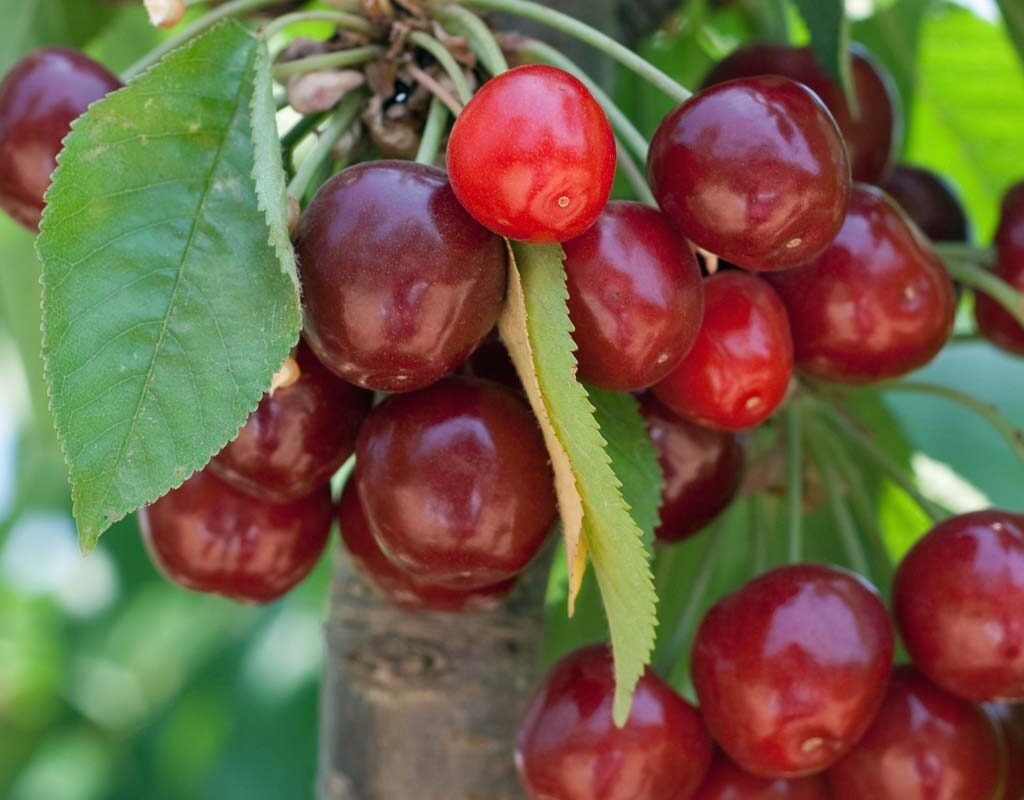
The first harvest is an exciting milestone. Sweetheart cherries usually begin producing fruit 3–4 years after planting, depending on growing conditions and rootstock.
Harvest Timing
- Fruit is ready when it has a bright red color and firm texture.
- Taste-testing is the most reliable way to determine ripeness.
Harvesting Tips
- Pick cherries carefully by hand or use scissors to avoid damaging the tree.
- Avoid shaking branches as this can bruise fruit and damage young branches.
- Harvest in the morning when temperatures are cooler to maintain fruit firmness.
Step 8: Post-Harvest Care
After harvesting, proper care ensures continued tree health:
- Watering: Maintain consistent moisture to help the tree recover from fruiting.
- Fertilization: Apply a balanced fertilizer to support next year’s growth.
- Pruning: Remove any damaged or dead branches post-harvest.
Proper post-harvest care helps your Sweetheart cherry tree prepare for future growth and increased fruit production.
Step 9: Maximizing Future Yields
Healthy Sweetheart cherry trees can produce abundant fruit with proper care:
- Consistent Watering: Prevents stress and encourages fruit development.
- Balanced Nutrition: Supports flowering, fruit set, and overall growth.
- Pruning: Keeps the tree healthy, encourages sunlight penetration, and reduces disease risk.
- Fruit Thinning: Remove excess small fruit clusters to improve size and quality of remaining cherries.
With attention to these factors, you can enjoy a bountiful harvest year after year.
Step 10: Additional Tips for Backyard Gardeners
- Container Planting: Semi-dwarf Sweetheart varieties can thrive in large pots with well-draining soil.
- Mulching: Maintain a 3–4 inch layer of organic mulch around the tree base to retain moisture and reduce weeds.
- Winter Protection: Young trees benefit from frost cloth or wind barriers in colder regions.
- Pollinator-Friendly Garden: Attract bees with flowering plants to improve pollination and fruit set.
Final Thoughts
The first harvest of Sweetheart cherries is a rewarding milestone for any gardener. By selecting the right site, planting carefully, maintaining consistent care, and managing pests and diseases, you can cultivate healthy trees that provide sweet, juicy cherries for years to come.
Key takeaways:
- Choose a sunny, well-draining site with appropriate spacing.
- Plant properly, ensuring the root flare is at soil level.
- Apply balanced fertilization and maintain consistent watering.
- Prune annually to maintain structure and promote sunlight penetration.
- Protect fruit from pests and harvest carefully to enjoy the best flavor and quality.
With patience, attention, and dedication, your Sweetheart cherry tree will thrive, providing delicious fruit that you can enjoy fresh, in desserts, or preserved for later. The first harvest is just the beginning of a long and fruitful journey.
If you want, I can also create a visual first-harvest Sweetheart cherry care guide, showing pruning tips, fruiting zones, and watering/mulching layout for maximum yields, which would make this blog even more practical for readers.
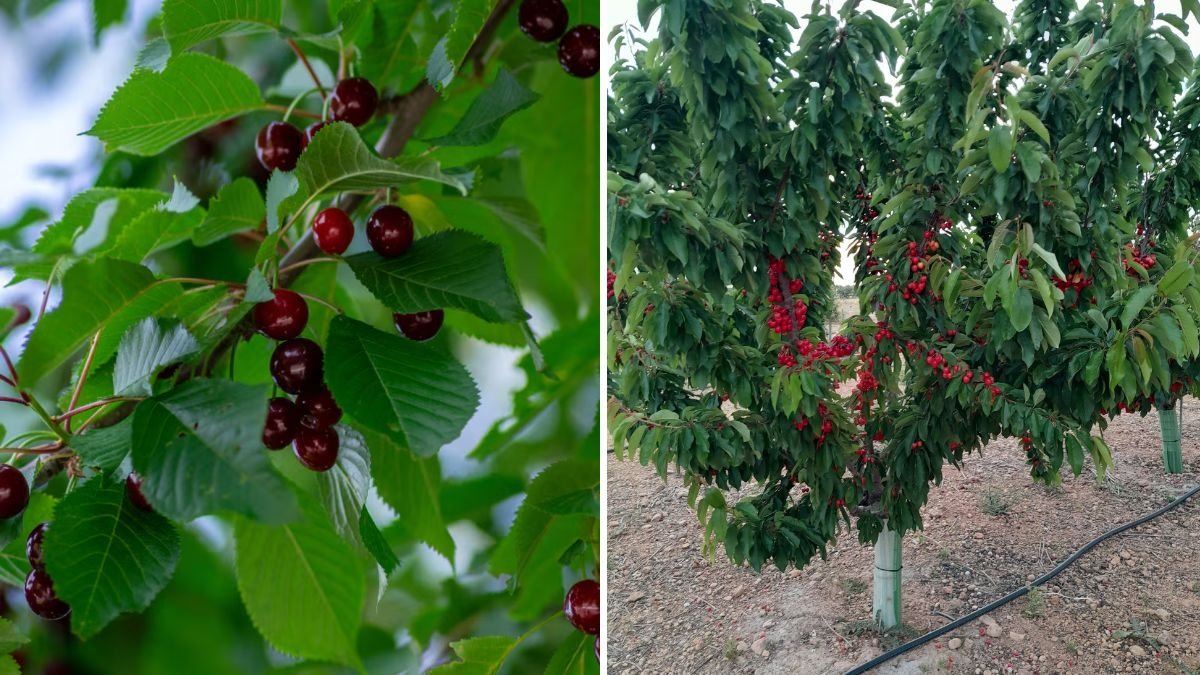
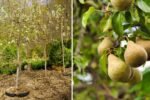




Leave A Comment